I’ve researched whether or not Lysol can be used on wood surfaces. As someone who cares about keeping my home clean and free of germs, I wanted to make sure I was using the right products to disinfect wooden surfaces. After doing some research, I found that Lysol can be used on wood, but there are some important things to keep in mind to avoid damaging the surface.
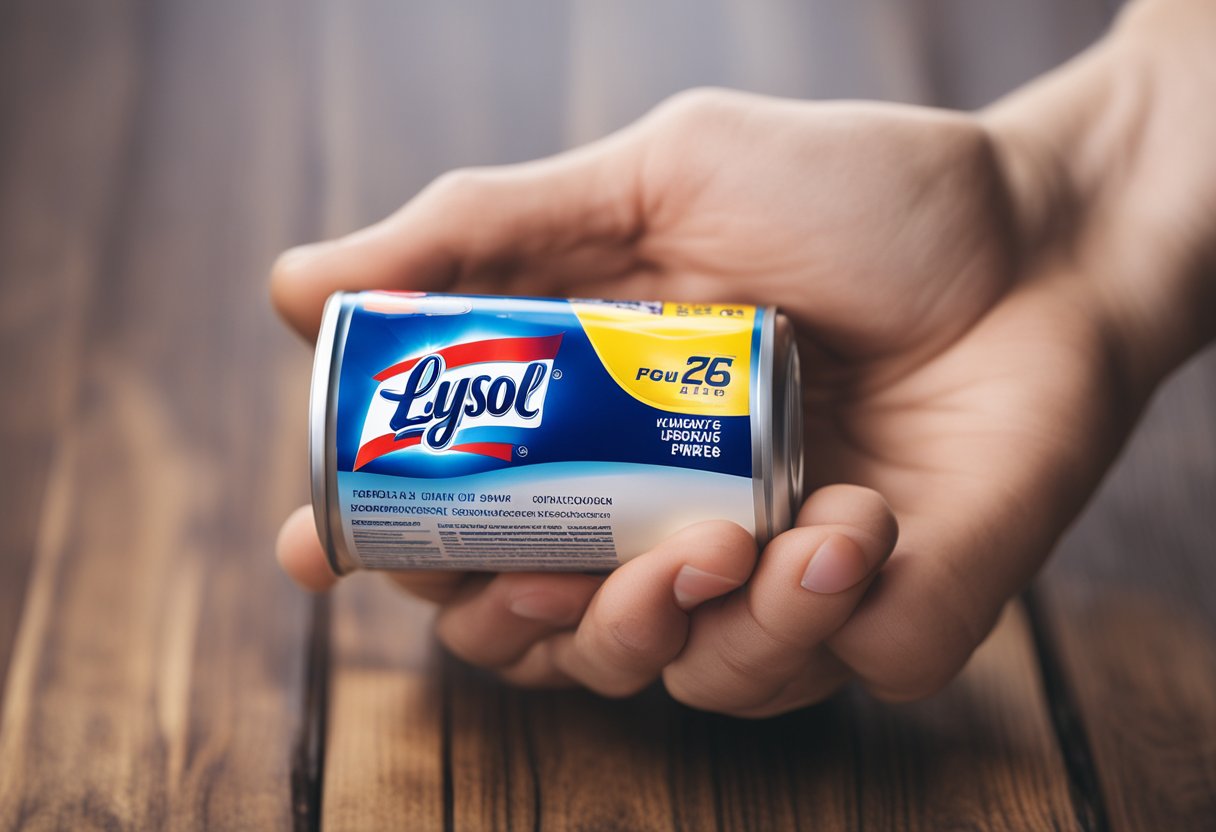
Understanding Lysol and its uses is key to determining whether or not it’s safe to use on wood. Lysol is a disinfectant spray that is commonly used to kill germs and bacteria on surfaces. It’s important to note that Lysol should never be used on unfinished or raw wood, as it can potentially damage the porous surface. However, Lysol can be used on finished, varnished, and sealed wood surfaces, as long as it’s applied correctly.
When applying Lysol on wood, it’s important to use it mixed with water, as Lysol on its own can potentially damage older wood. Additionally, it’s important to follow safety measures and precautions to avoid damaging the wood or causing harm to yourself. There are also alternative cleaning methods that can be used on wood surfaces to avoid using harsh chemicals like Lysol.
Key Takeaways
- Lysol can be used on finished, varnished, and sealed wood surfaces, as long as it’s applied correctly and mixed with water.
- It’s important to follow safety measures and precautions when using Lysol on wood to avoid damaging the surface or causing harm to yourself.
- There are alternative cleaning methods that can be used on wood surfaces to avoid using harsh chemicals like Lysol.
Understanding Lysol and Its Uses
As someone who has used Lysol products for years, I can confidently say that they are effective at cleaning and disinfecting surfaces. Lysol is a well-known brand that offers a range of cleaning products, including sprays, wipes, and all-purpose cleaners.
Lysol products are designed to kill germs and bacteria on surfaces, making them a popular choice for households and businesses alike. Lysol sprays and wipes are particularly useful for disinfecting high-touch surfaces like doorknobs, light switches, and countertops.
It is important to note that Lysol is a disinfectant, not a cleaner. This means that while it can kill germs and bacteria, it may not be effective at removing dirt and grime from surfaces. For this reason, it is recommended to clean surfaces with soap and water before using Lysol products for disinfection.
When it comes to using Lysol on wood furniture, it is important to exercise caution. While Lysol can be used on finished, varnished, and sealed wood, it is not recommended for use on raw or unfinished wood. This is because Lysol is a liquid solution that could potentially damage the porous surface of raw wood.
In conclusion, Lysol is a powerful disinfectant that can be used to kill germs and bacteria on surfaces. It is important to use Lysol products as directed and to exercise caution when using them on wood furniture. Always read the label and follow the instructions carefully to ensure that you are using Lysol products safely and effectively.
Wood and Its Characteristics
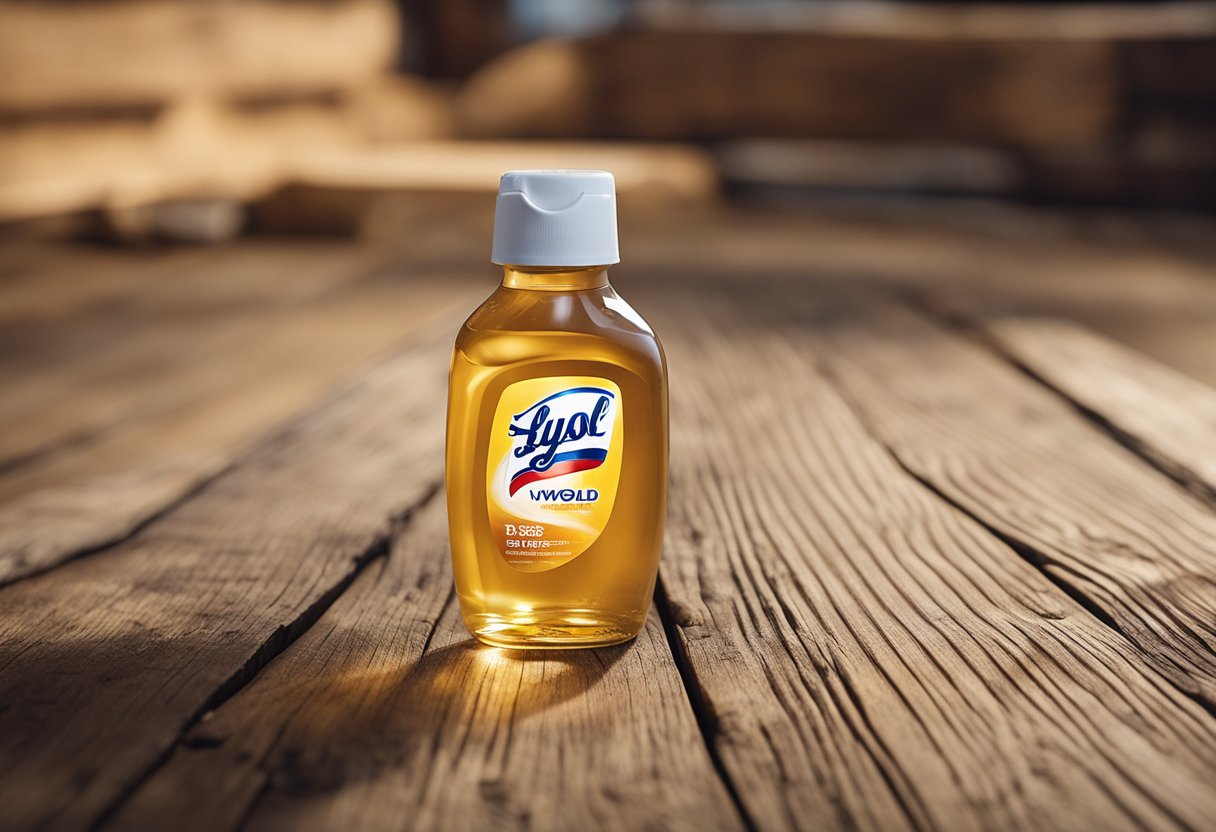
As someone who has worked with wood for many years, I can tell you that it is a versatile and beautiful material that can be used in a variety of ways. However, when it comes to cleaning and disinfecting wood surfaces, it’s important to understand the characteristics of wood and how it can be affected by different cleaning products.
Wood is a porous material, which means that it can absorb liquids and other substances. This is especially true for unfinished or raw wood, which is more susceptible to damage from cleaning products. Polished and laminated wood, on the other hand, has a protective layer that can help prevent damage from cleaning products.
When it comes to wooden floors, there are two main types: hardwood and softwood. Hardwood floors are made from trees that have broad leaves, such as oak, maple, and cherry. Softwood floors are made from trees that have needles or cones, such as pine, spruce, and fir. Hardwood floors are generally more durable and resistant to wear and tear than softwood floors.
If you have wood furniture, tables, or cabinets in your home, it’s important to be careful when cleaning and disinfecting them. Using harsh chemicals or abrasive cleaners can damage the finish and cause discoloration or warping. Instead, use a gentle cleaner and a soft cloth to wipe down the surface.
When it comes to using Lysol on wood, it’s important to note that it should only be used on finished, varnished, and sealed wood. Lysol is a liquid solution, and therefore, could potentially damage the porous surface of raw or unfinished wood. If you’re unsure whether your wood surface is finished or unfinished, test a small area first to see how it reacts to the cleaner.
In summary, wood is a beautiful and versatile material that requires special care when it comes to cleaning and disinfecting. Understanding the characteristics of wood and the types of surfaces you’re working with can help you choose the right cleaning products and techniques to keep your wood surfaces looking their best.
Applying Lysol on Wood
As an experienced cleaner, I can confidently say that Lysol can be used on wood surfaces. However, it is essential to know how to apply it correctly to avoid damaging the wood. Here are some tips for applying Lysol on wood:
-
Clean the surface: Before applying Lysol, clean the wood surface by sweeping or vacuuming to remove any dust or debris. You can also use a clean cloth to wipe the surface.
-
Dilute Lysol: Lysol can be quite strong, so it is advisable to dilute it with water before use. You can mix one part Lysol with one part water to create a cleaning solution.
-
Test on a small area: It is always best to test any cleaning product on a small, inconspicuous area of the wood surface to ensure it doesn’t damage the wood.
-
Apply with a clean cloth or wipes: Apply the Lysol solution to the wood surface using a clean cloth or wipes. Make sure to cover the entire surface evenly.
-
Sanitize: Lysol is a great sanitizing agent, so it is ideal for use on surfaces that require sanitizing, such as kitchen counters or children’s toys.
-
Avoid using on unfinished or raw wood: Lysol should not be used on unfinished or raw wood surfaces as it can damage the wood.
-
Avoid using too much Lysol: Using too much Lysol can lead to a buildup on the wood surface, which can be difficult to remove.
In conclusion, Lysol can be used on wood surfaces, but it is essential to follow the right procedures to ensure that the wood is not damaged. By following the tips above, you can safely and effectively use Lysol on your wood surfaces.
Potential Damage to Wood
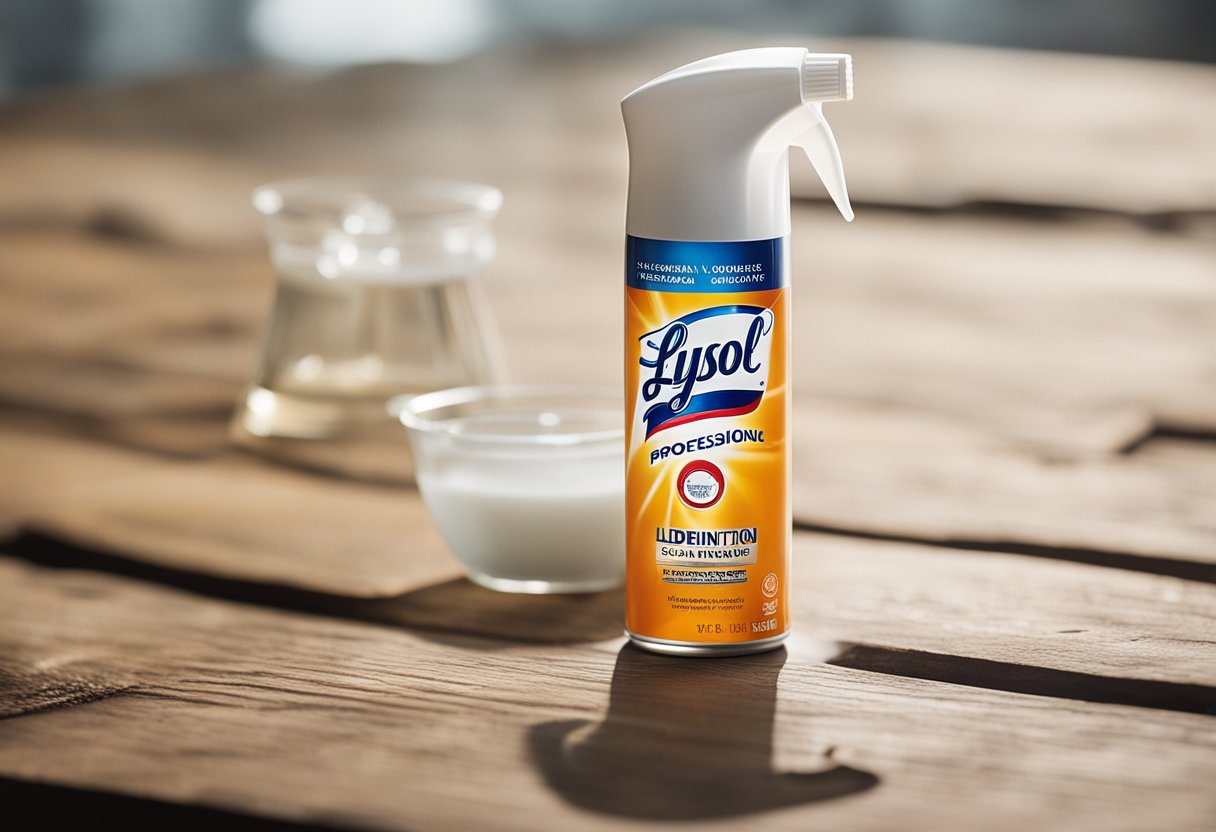
As an expert in home cleaning, I know that using the wrong cleaning product on wood can cause serious damage. Lysol is a powerful disinfectant that can be used on many surfaces, but it is not always safe to use on wood.
One of the biggest concerns with using Lysol on wood is the potential for damage. If the wood is unfinished or porous, Lysol can penetrate the surface and cause discoloration or other damage. It is important to note that Lysol should only be used on non-porous and polished wooden surfaces.
Another issue with using Lysol on wood is that it can strip away any water-resistant finish, varnish, or wax that may be on the surface. This can leave the wood vulnerable to moisture, which can cause warping, cracking, or other damage over time.
Additionally, Lysol can leave behind a hazy residue on wood surfaces, especially if it is not wiped away immediately. This can be difficult to remove and may require additional cleaning or refinishing to fix.
In some cases, Lysol may even cause the paint on wood surfaces to peel or discolor. It is important to test any cleaning product on a small, inconspicuous area before using it on a larger surface to avoid any potential damage.
Overall, while Lysol can be used on certain types of wood, it is important to be cautious and knowledgeable about the potential for damage. If you are unsure about whether Lysol is safe to use on your wood surfaces, it may be best to consult a professional or use a different cleaning product altogether.
Safety Measures and Precautions
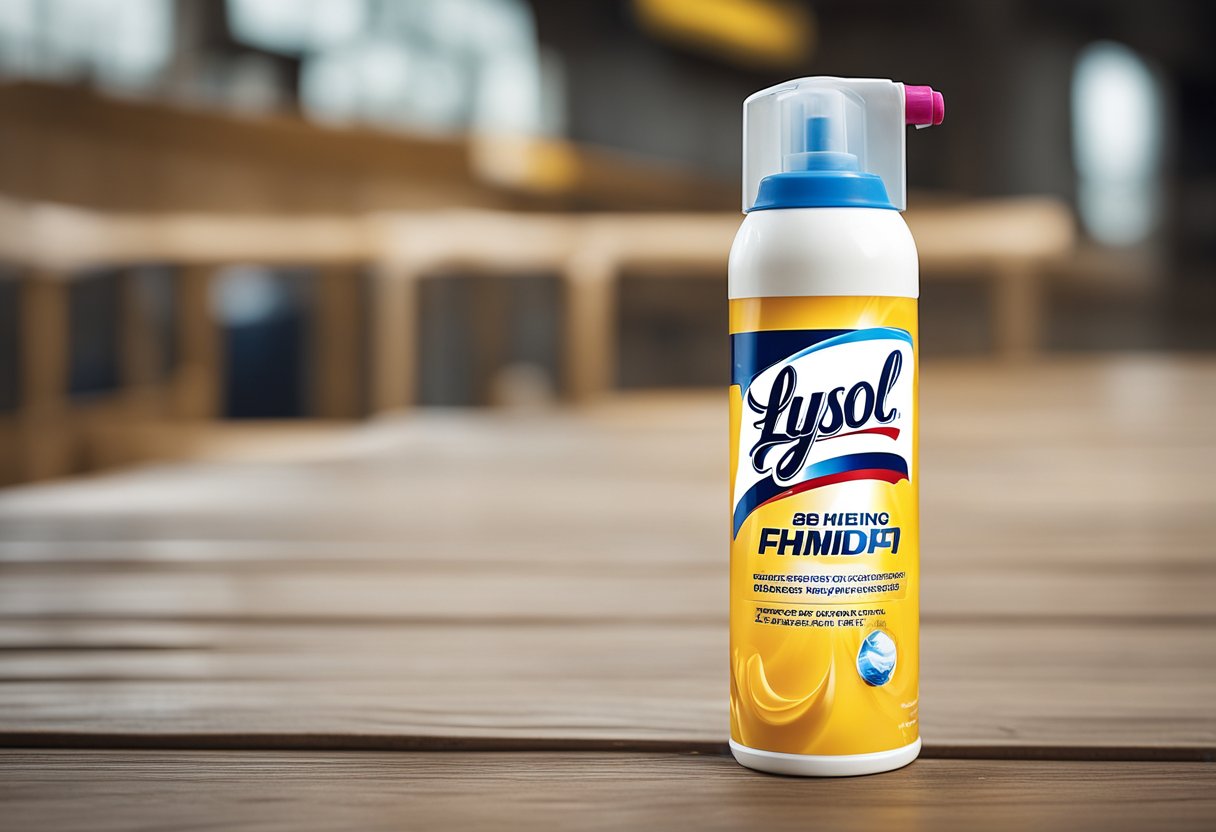
When using Lysol on wood, it is important to take safety measures and precautions to ensure that you are not exposing yourself to harmful chemicals. Here are some tips to follow:
-
Wear gloves: It is important to wear gloves when using Lysol on wood. This will protect your skin from coming into contact with the solution, which can be irritating and cause skin rashes.
-
Wear a dust mask: When using Lysol on wood, it is important to wear a dust mask to avoid inhaling any fumes. This is especially important if you are using Lysol in a confined space or an area without proper ventilation.
-
Use an all-purpose cleaner: Before using Lysol on wood, it is recommended to clean the surface with an all-purpose cleaner and warm water. This will remove any dirt or grime on the surface and ensure that the Lysol is effective.
-
Use mineral spirits: If you have used Lysol on wood and notice any damage or discoloration, you can use mineral spirits to remove the Lysol residue. Apply the mineral spirits to a clean cloth and wipe the affected area.
-
Use an exhaust fan: When using Lysol on wood, it is important to use an exhaust fan to remove any fumes and odors from the room. This will also help to prevent the buildup of moisture, which can cause damage to the wood.
-
Avoid door handles: When using Lysol on wood, it is important to avoid touching door handles or other surfaces with your hands. This will prevent the spread of germs and bacteria.
By following these safety measures and precautions, you can safely and effectively use Lysol on wood surfaces.
Alternative Cleaning Methods
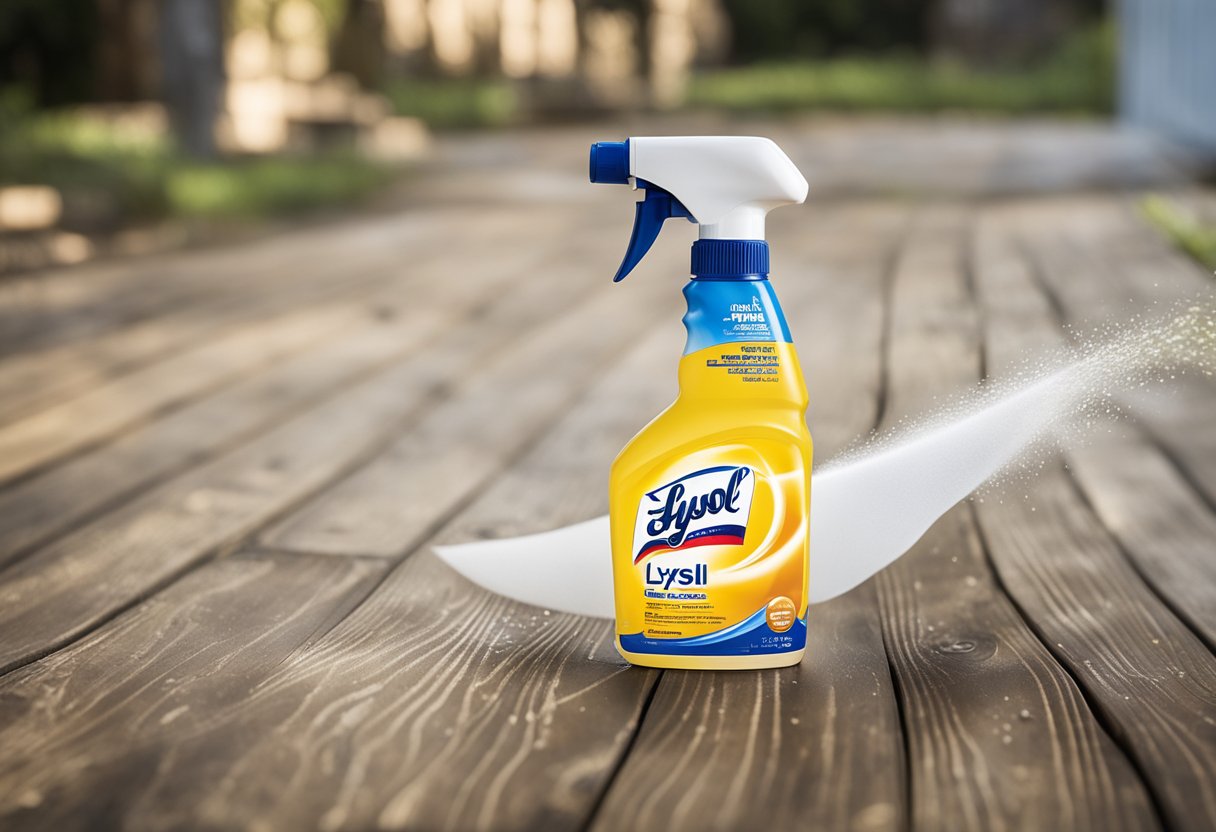
When it comes to cleaning wood surfaces, there are alternative methods to using Lysol that can be just as effective. Here are some options to consider:
White Vinegar
White vinegar is a natural and non-toxic cleaning agent that can be used to clean and disinfect wood surfaces. Mix equal parts water and white vinegar in a spray bottle and apply to the surface. Wipe the surface with a clean cloth and let it air dry. White vinegar is a great option for pre-cleaning wood surfaces before deep cleaning.
Soap Scum
If your wood surfaces have soap scum buildup, dish soap can be an effective alternative to Lysol. Mix a few drops of dish soap with warm water and apply to the surface. Wipe the surface with a clean cloth and let it air dry. Dish soap is also a great option for cleaning wood shelves.
Vacuum
Vacuuming wood surfaces can be an effective way to remove dust and debris. Use a soft-bristled brush attachment to avoid scratching the surface. Vacuuming is a great option for pre-cleaning wood surfaces before deep cleaning.
Deep Clean
For a deep clean of wood surfaces, mix a few drops of dish soap with warm water and apply to the surface. Scrub the surface with a soft-bristled brush and rinse with water. Dry the surface with a clean cloth. This method is effective for removing dirt and grime buildup.
Deodorize
To deodorize wood surfaces, mix equal parts water and white vinegar in a spray bottle and apply to the surface. Let it sit for a few minutes and wipe the surface with a clean cloth. This method is effective for removing odors from wood surfaces.
Shiny
To make wood surfaces shine, mix equal parts water and white vinegar in a spray bottle and apply to the surface. Wipe the surface with a clean cloth and let it air dry. This method is effective for creating a shiny finish on wood surfaces.
Overall, there are many alternative cleaning methods to using Lysol on wood surfaces. These methods are non-toxic, effective, and can help maintain the longevity of your wood surfaces.
Impact on Health and Environment
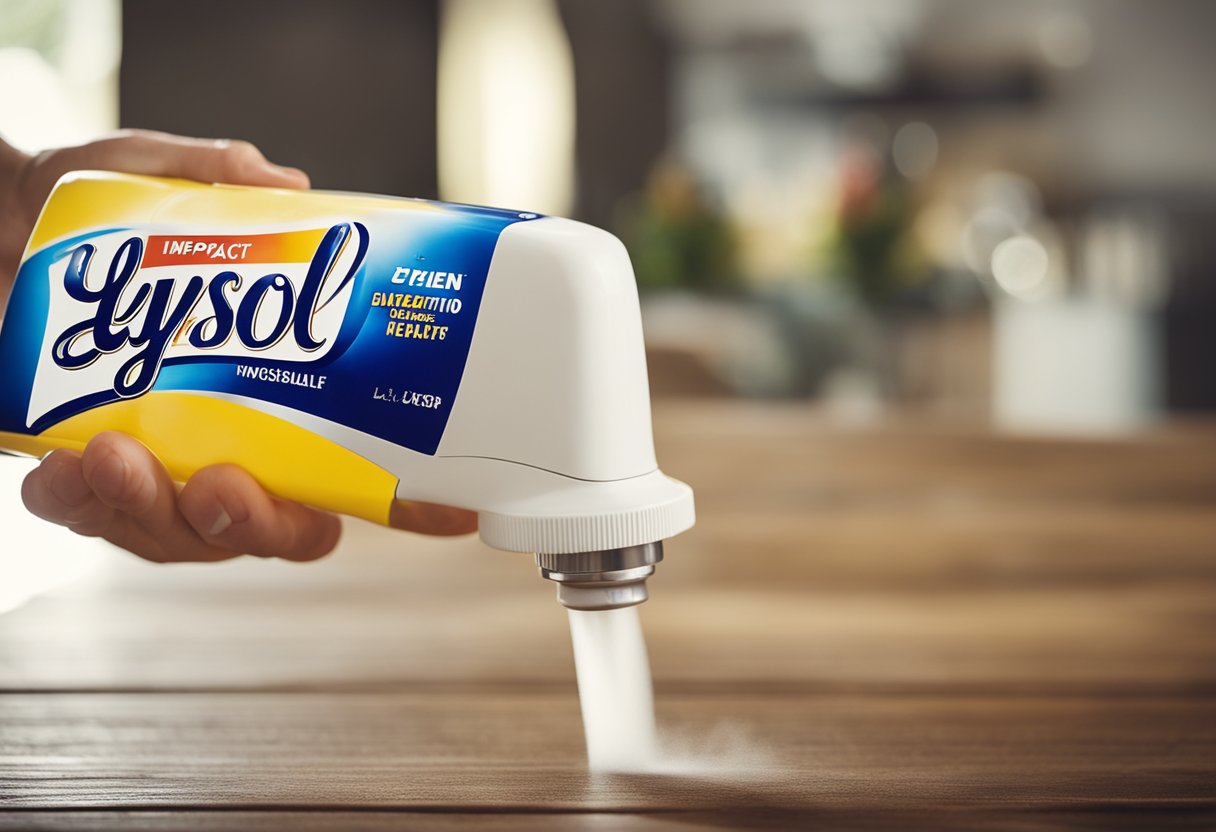
As a professional cleaner, I always prioritize the safety of my clients and the environment. Using Lysol on wood can have both positive and negative impacts on health and the environment. Here are the details:
Health Impact
Lysol is an effective disinfectant that kills germs, bacteria, and viruses on contact. However, it contains chemicals that can be harmful to humans if ingested or inhaled. Therefore, it is important to use Lysol on wood with caution. Always read the label and follow the instructions carefully before using it.
Pets can also be affected by Lysol. According to the American Society for the Prevention of Cruelty to Animals (ASPCA), Lysol products are toxic to cats and dogs. If your pets come into contact with Lysol, it can cause skin irritation, vomiting, and diarrhea. Therefore, it is important to keep your pets away from Lysol while cleaning.
Environmental Impact
Lysol contains chemicals that can harm the environment. The chemicals in Lysol can pollute the air and water if not disposed of properly. Therefore, it is important to use Lysol with caution and dispose of it properly.
Lysol can also damage electronics and other sensitive surfaces. Therefore, it is important to keep Lysol away from electronics while cleaning.
In conclusion, using Lysol on wood can have both positive and negative impacts on health and the environment. Therefore, it is important to use Lysol with caution and dispose of it properly.
Frequently Asked Questions
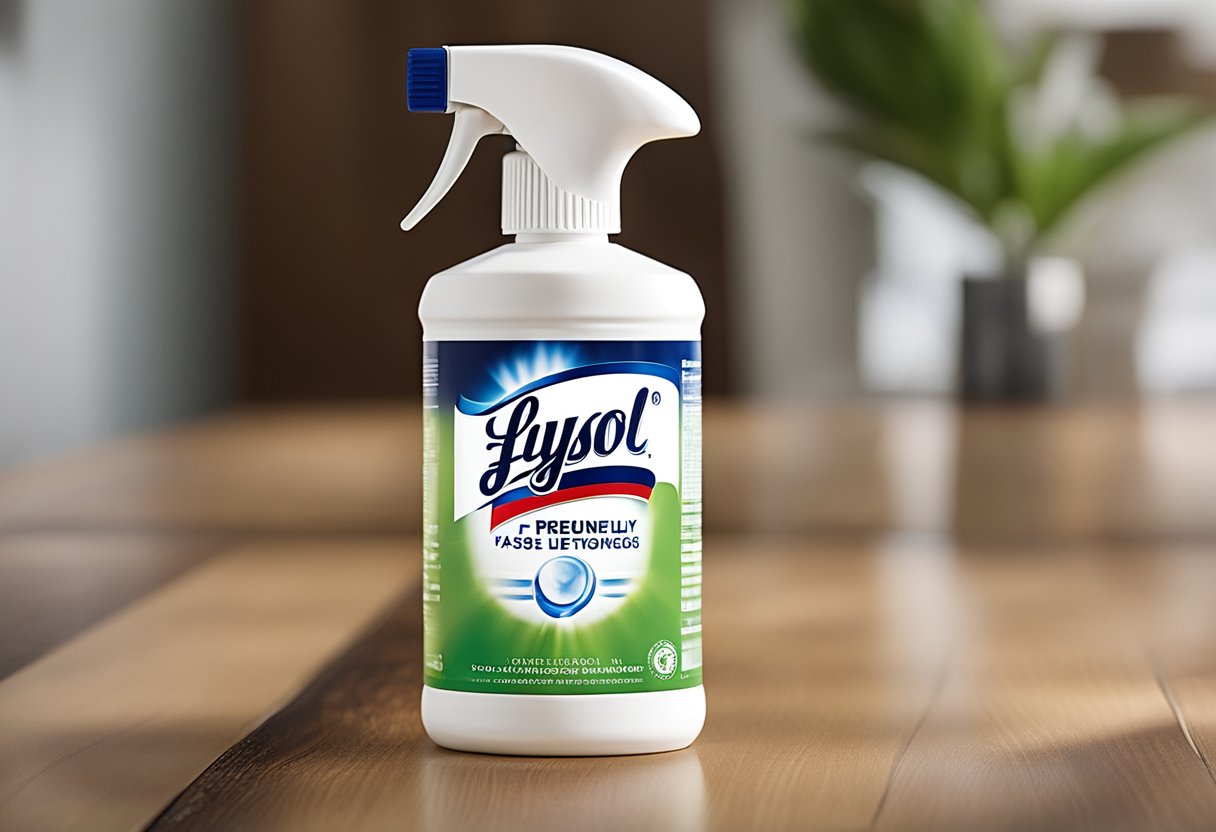
Can Lysol be used to disinfect hardwood floors?
Yes, Lysol can be used to disinfect hardwood floors. However, it is important to use it properly. According to Upgraded Home, you should spray the Lysol onto a clean cloth and then wipe the floor with the cloth. Make sure to remove any excess Lysol from the floor to prevent damage.
Is it safe to use Lysol on wood cabinets?
Lysol can be used on wood cabinets, but it is important to use it properly. According to Home Pander, you should spray the Lysol onto a clean cloth and then wipe the cabinets with the cloth. Make sure to remove any excess Lysol from the cabinets to prevent damage.
Can Lysol wipes be used on wood surfaces?
Yes, Lysol wipes can be used on wood surfaces. However, it is important to use them properly. According to Cleaner Profy, you should wipe the surface with the Lysol wipe and then use a clean cloth to remove any excess Lysol from the wood surface.
Can Lysol be used on wood laminate?
Yes, Lysol can be used on wood laminate. However, it is important to use it properly. According to Bedroom Furniture Spot, you should spray the Lysol onto a clean cloth and then wipe the wood laminate with the cloth. Make sure to remove any excess Lysol from the wood laminate to prevent damage.
Is Lysol spray safe to use on wood?
Lysol spray can be used on wood, but it is important to use it properly. According to Letti & Co, you should spray the Lysol onto a clean cloth and then wipe the wood with the cloth. Make sure to remove any excess Lysol from the wood to prevent damage.
What is the best way to disinfect wood floors?
The best way to disinfect wood floors is to use a disinfectant cleaner that is safe for use on wood. According to Upgraded Home, you should spray the disinfectant cleaner onto a clean cloth and then wipe the wood floor with the cloth. Make sure to remove any excess cleaner from the floor to prevent damage.

Hi, I’m Sal Muller of Tooltrip.com. My DIY experience led me to understand essential power tools for home projects. Tooltrip.com guides enthusiasts and professionals in choosing right tools for any job. I provide concise top tool reviews for easier, efficient DIY.

